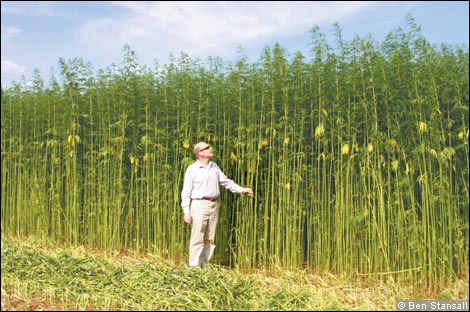What’s in a name?
Cannabis is one of the oldest cultivated plants on the planet. Throughout human history, we have seen two main varieties of cannabis being grown, one as a fiber, and one as a medicine or a drug. Hemp is the fiber variety and is grown in tall stands with the plants very close together. The Hemp plant has been selected and bred for thousands of years to produce a fiber crop. Both male and female plants are harvested and processed into a wide variety of products. Marijuana or Sensimilla, on the other hand, has been bred for thousands of years to produce female flowers that are full of the active ingredients like THC and variations that smell especially strong.
“According to a 1976 study published by the International Association of Plant Taxonomy concluded “both hemp varieties and marijuana varieties are of the same genus, Cannabis, and the same species, Cannabis Sativa. Further, there are countless varieties that fall into further classifications within the species Cannabis sativa.”
Enter low THC sensimilla, in the early 2000’s as cannabis testing laboratories opened in California they would occasionally (aprox. 1 out of 2000) find a high CBD low THC strains. Lawrence Ringo of SOHUM seeds discovered and disseminated his high CBD variation and plant breeders have since stabilized several other high CBD variations.
“While marijuana plants contain high levels of THC, hemp contains very little of the psychoactive chemical. This single difference is what most rely on to distinguish hemp from marijuana. For example, countries like Canada have set the maximum THC content of hemp at 0.3%. Any cannabis with higher THC levels is considered marijuana instead.”
In Josephine county, a group of investors, “Orhempco” has gone public with their efforts. Cliff Thomason along with Josephine County Commissioners Cheryl Walker and Simon Hare are growing CBD hemp crop 900 feet from Hidden Valley high school in Murphy, Oregon and say that the males have been removed and their crop was tested at 3 percent according to the Grants Pass Daily Courier article dated July 5th. It may have been a mistake, but we assume Walker and her partners realize that if their hemp crop is over 0.3 percent it would be quite illegal and of interest to the DEA.
Jim Moore, writing for the Grants Pass Daily Courier June 12, two Josephine County commissioners who sent a letter to the Oregon Legislature opposing a bill that would restrict hemp production in the county are partners in a six-person consortium that is growing hemp in the Murphy area. Amid threats of an ethics flap against his colleague Cheryl Walker, Josephine County Commissioner Simon Hare issued a surprise statement during a meeting Wednesday night announcing that he too might have a conflict of interest in the matter.
The bill they opposed, HB2668 passed in the Oregon house by a wide margin, only to fail in the senate. The bill contained provisions for $800k in research dollars for OSU to study cannabis genetics and hemp / med-rec interactions. It is vital to the economic growth of this surfacing industry that long banned research be performed now. Hemp farmers, medical cannabis farmers, and soon recreational cannabis farmers need some solid science as a foundation for sound legislation. A lot of fear and myth surround the hemp crop pollen threat. Many sources site a claim that 5 miles is a safe distance. should that prove to be the case, then a pin system like other crops where a map of potential hemp pollen fall out and or existing cannabis grows could inform farmers before they invest.
Richard Reames
Contact [email protected]
The opinions expressed here are those of the authors and not necessarily those of OSGG.

